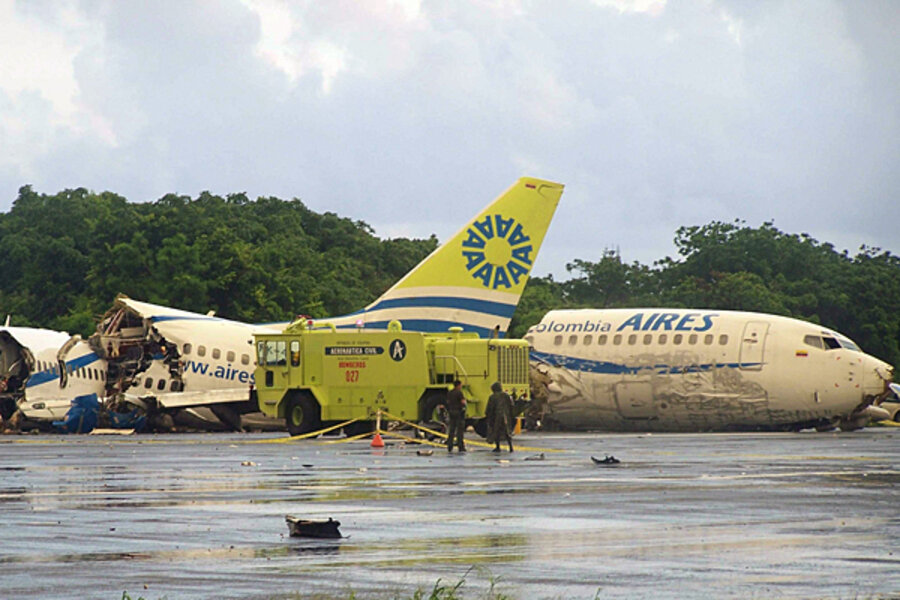In Colombia plane crash, pilot skill praised for minimal injury
Loading...
| Mexico City
Officials in Colombia called it a “miracle” that the plane crash on a Colombian island early Monday morning resulted in just one death.
Even as authorities work to determine what caused the Boeing 737 to go down, deft piloting is being pointed to as a key factor in saving the lives of the 130 other people aboard, including at least five American citizens.
“The pilot’s professionalism prevented the plane from going off the runway,” Gen. Orlando Paez of Colombia’s national police told Caracol Radio.
Officials are investigating whether the plane, which belonged to Colombian carrier Aires and was on its way from the capital, Bogotá, had been hit by lightning as it neared San Andres, a Caribbean resort island off the east coast of Nicaragua. A downdraft could have also caused the crash, officials speculated.
Colombian national police, in a statement, said the plane broke into three parts as it landed. There were at least 121 passengers aboard, including four children, plus six crew members.
The state government sent an e-mail to the Associated Press that said passengers included eight US citizens and four Brazilians. An airline representative later told the Associated Press that only five US citizens were aboard.
The sole death could have been caused by a heart attack, a doctor treating the patients has said.
The damage could have been far worse, according to Robert Sanchez, director of the hospital Amor de Patria, which was treating many of the injured. "It's incredible. For the dimension [of the accident], there should be more," he told the Associated Press.
Colombian Air Force Col. David Barrero told the wire service by telephone that "the skill of the pilot kept the plane from colliding with the airport."
The incident called to mind the US Airways flight that landed in the Hudson River in 2009, dubbed the “Miracle on the Hudson.” Captain Chesley "Sully" Sullenberger was credited then with saving the lives of all 150 passengers when the plane made an emergency landing on the river.
There are many more examples, says Robert Mann, president of R.W. Mann & Company, an aviation consultancy in Port Washington, N.Y. He says skilled pilots have managed to safely land despite structural failures on takeoff, malfunctioning controls, and cargo door failure. (Another example he cites is the 1989 crash in Honolulu that killed nine people, of 355 aboard.)
“Obviously skill goes into it, experience goes into it,” he says.
The experience of past crashes teaches pilots and the industry overall ways to deal with problems in the future. PBS has looked back at the lessons learned from some of the worst air accidents in history.





